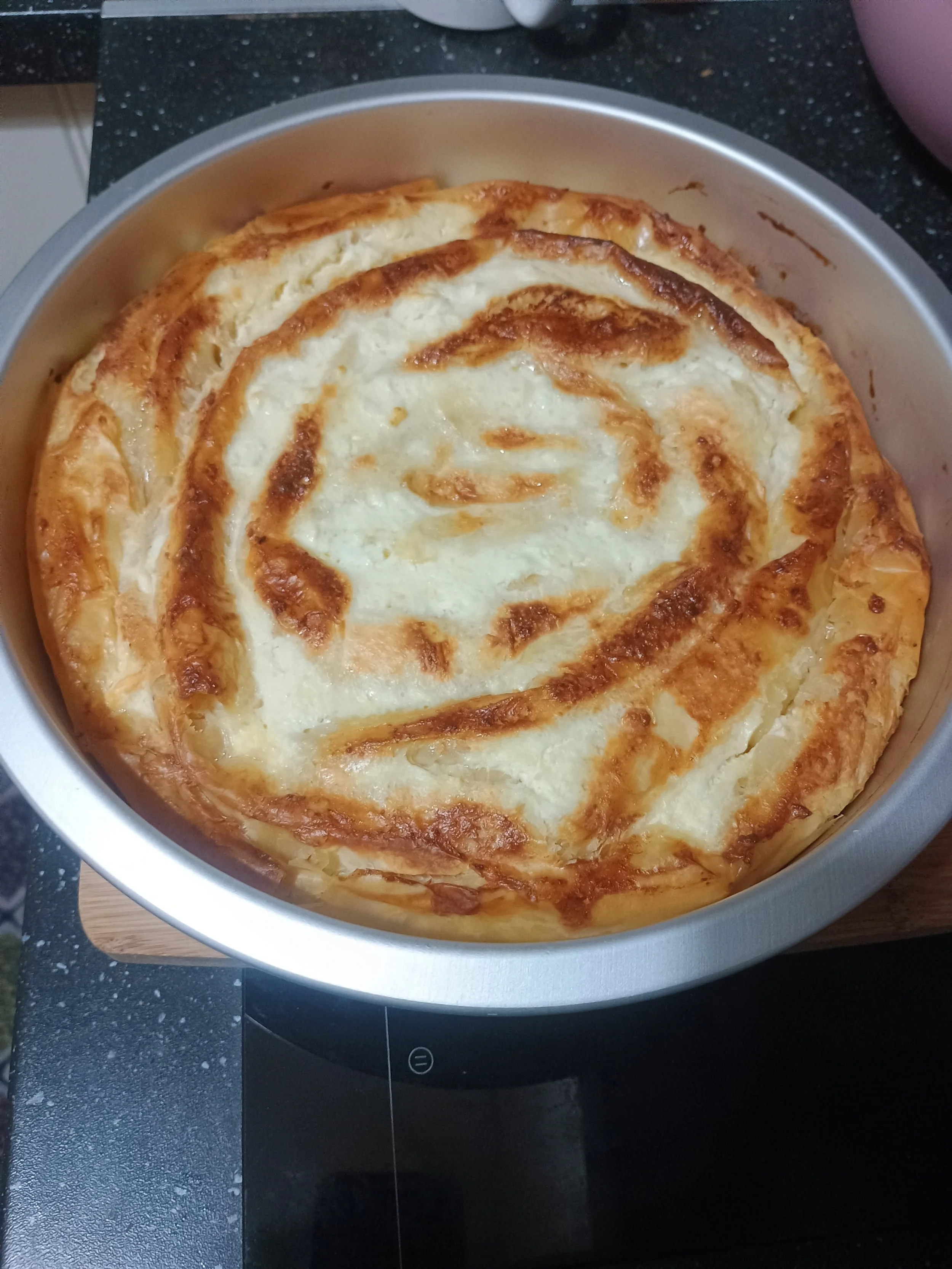This is my forth salty post
Creating a salty pastry was my next idea. it is a quite simple but tasty. I found the best components and with some love it turned to my first try to create something salty, at the same time a basic one but exactly this made it much more challenging to find a way to do it more tastier and with the ambition to be not only good looking but also a very tasteful pastry creation by developing my own signature recipe…
Banitsa is a traditional pastry made from thin layers of puff dough. Home banitsa is an essential part of the Bulgarian tableful. On holidays a “lucky coin” is baked inside: it is wishes, written on paper and wrapped in foil or a piece of dogwood with berries.
Traditional filling is white cheese (sirene/сирене) there are also options with spinach (spanachnik/спаначник), pumpkin (tikvenik/тиквеник), herbs (zelnik/зелник), potatoes (patatnik/пататник), onions (luchnik/лучник), fish and meat. The shape also differs: spiral banitsa is called “sviwnik/свивник”, layered like lasagna “nalozgena/наложена” banica.
Where does this name come from?
It is believed that the name comes from an ancient Slavic word «гъѫбнти» which means «bend or fold». In Bulgarian language, the word «banitsa» can also be used as a synonym of wrinkled or rumpled. For example, a teacher may blame a student for the appearance of his exercise book by comparing it with a banitsa.
Similar types of pastry can be easily found in the neighboring countries: spinach pie in Greece (spinakopita/σπανακόπιτα), gibanitsa in Serbia, börek in Turkish cuisine, burekas in Israel (בורקס), bugatsa in Macedonia, achma in Georgia (აჩმა), cheburek in Kazakhstan (çiberek). All these baking options are united by puff pastry “philo”, prepared same way.
